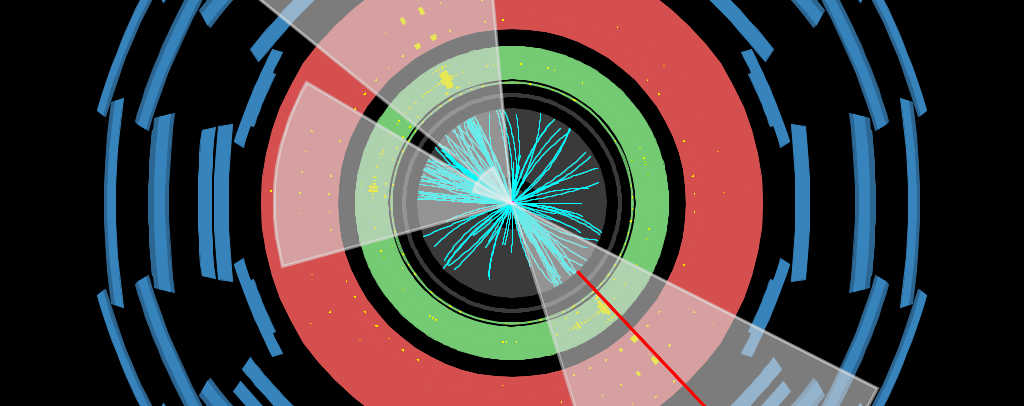Not a jet all the way: is dark matter hiding in plain sight?
26 May 2023 | By
What happens if dark-matter particles are produced inside a jet of Standard-Model particles? This leads to a novel detector signature known as semi-visible jets! The ATLAS Collaboration has come up with a new search for semi-visible jets, looking for them in a general production mode where two protons interact by exchanging an intermediate particle, which is then converted into two jets.
The elusive nature of dark matter remains one of the biggest mysteries in particle physics. Most of the searches have so far looked for events where a “weakly interacting” dark-matter particle is produced alongside a known Standard-Model particle. Since the dark-matter particle cannot be seen by the ATLAS detector, researchers look for an imbalance of transverse momentum (or “missing energy”). However, some theoretical models predict a “strongly interacting” dark sector, with dark quarks and gluons as replicas of Standard-Model quarks and gluons. Semi-visible jets would arise when dark quarks decay partially to Standard-Model quarks and partially to stable dark hadrons (the “invisible fraction”). Since they are produced in pairs, typically along with additional Standard-Model jets, the missing energy arises when all the jets are not fully balanced. The direction of the missing energy is often aligned with one of the semi-visible jets, as can be seen in the event display above.

This makes searches for semi-visible jets very challenging, as this event signature can also arise due to mis-measured jets in the detector. For their new search, physicists had to make sure all such effects had been accounted for. To do this, they focused on a few observables: the uniqueness of the alignment and magnitude of transverse momentum, and the angle between the semi-visible jets. They also investigated scenarios with different invisible fractions and mediating particle masses.
After accounting for all the Standard-Model processes contributing to this event topology, researchers found no hint of semi-visible jets. As can be seen from Figure 1, which shows the angular difference between the two semi-visible jet candidates, the data follows the Standard-Model background shape. Dark-matter signals were expected to have a slightly different shape.
The search for semi-visible jets very challenging, as its event signature can also arise due to mis-measured jets in the detector. How did ATLAS researchers overcome this challenge?

This novel result sets the first limits on this specific semi-visible-jet production scenario, shown in Figure 2 as functions of both the mediator mass and the invisible fraction. The search is more sensitive at intermediate values of the invisible fraction, and excludes mediator masses up to 2.7 TeV. Researchers were also able to report the number of data events observed corresponding to the event selection requirements. This sets important groundwork for future searches for dark matter, enabling physicists to build semi-visible-jet models that take into account the existing constraints on this signature.
There’s still a lot left to explore! ATLAS researchers plan to systematically study all possible signatures from the strong dark sector landscape, which may include uncovered signatures like the one considered in this search. As the ATLAS experiment continues to grow its mammoth dataset, it will provide new opportunities for exploration and new options to extend the search for semi-visible jets.
Explore the interactive event display
Learn more
- Search for non-resonant production of semi-visible jets using Run 2 data in ATLAS (EXOT-2022-37)
- LHCP2023 presentation by Sukanya Sinha: Semi-visible jets, a.k.a. Dark showers: experimental status
- Search for non-resonant production of semi-visible jets using Run 2 data in ATLAS (ATLAS-CONF-2022-038)
- Summary of new ATLAS results from LHCP 2023, ATLAS News, May 2023




